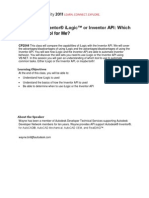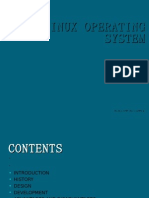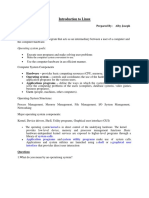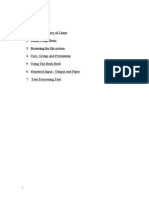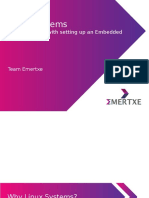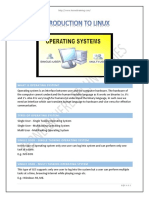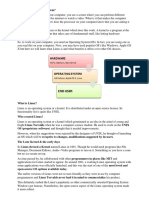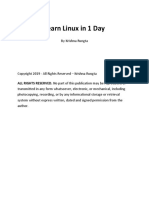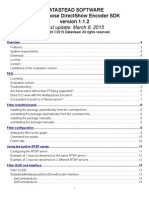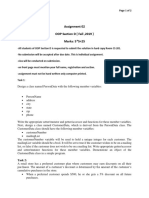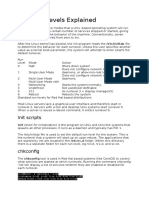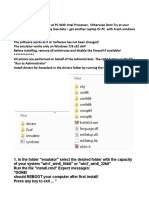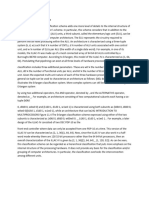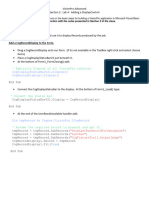UNIX
OPERATING
SYSTEM
I do get my pizzas paid for by Linux indirectly.
-Linus Torvalds
INDEX
What is an Operating System?
What is UNIX?
History of UNIX Operating System.
LINUX Operating System.
Features of LINUX Operating System.
How to install LINUX?
Structure of LINUX Operating System.
Kernel in LINUX.
Shell in LINUX.
Comparison between LINUX & WINDOWS.
Distributions of LINUX.
WHAT IS AN OPERATING SYSTEM?
An operating system or OS is software installed on a
computer's hard drive that enables the computer
hardware to communicate and operate with the computer
software. Without a computer operating system, a
computer and software programs would be useless.
In normal word, we can say that an operating system is a
messenger which helps the user to communicate with
the hardware.
The picture shows latest Microsoft Windows 10
in its original packaging.
WHAT IS UNIX?
UNIX is a multi-user, multitasking operating system (OS)
that was developed at AT&T Bell Labs in the late 1960s. It
was designed to be used exclusively by programmers and
became a leading operating system for workstations
because of its portability, flexibility, and power.
UNIX systems also have a graphical user interface (GUI)
similar to Microsoft Windows which provides an easy to use
environment
The UNIX operating system is made up of three parts; the
kernel, the shell and the programs.
HISTORY OF UNIX OPERATING SYSTEM
The UNIX operating system was born in late 1960s. It’s
beginnings with MULTICS, which stands for Multiplexed
Operating and Computing System
It was developed by Ken Thompson, Dennis Ritchie and
with few more peoples at AT&T Bell Labs in New jersey.
It was the first operating system which is developed in high
level language (C Programming Language)
Later in 1991 UNIX updated in Linux operating system.
It is a picture of Bell Labs (Ken Thompson is
sitting on the chair and Dennis Ritchie is
standing next to Ken).
LINUX OPERATING SYSTEM
Linux is an open-source operating system like other
operating systems such as Microsoft Windows, Apple
Mac OS, iOS, Google android, etc.
It was developed by Linus Torvalds in 1991, which
sprouted as an idea to improve the UNIX OS. First look of Kali Linux
Now-a-days from smartphones to cars, supercomputers
and home appliances, home desktops to enterprise
servers, the Linux operating system is everywhere.
It is free of cost, and free from proprietary restrictions and
hidden functions.
FEATURES OF LINUX OPERATING SYSTEM
Multiuser capability
Multitasking
Portability
Security
Live CD/USB
Graphical User Interface (X Window system)
Support's customized keyboard
Application support
File System
Open Source
HOW TO INSTALL UBUNTU LINUX?
NOTE:- For installing Ubuntu , we need a bootable pendrive/CD Drive.
PART 1 ( BOOT A PENDRIVE)
Step 1:- Search ubuntu.com on google.
Step 2:- Download ISO file of Ubuntu.
Step 3:- For booting a pendrive we need a
software Rufus. So now we search
Rufus.ie on google.
Step 4:- Now we are able boot to our
pendrive/CD Drive.
Note:- Always download LTS file for Long Term Support
PART 2 ( BOOTING OUR SYSTEM)
Step 1:- Insert your bootable pendrive in System.
Step 2:- Click on Try Ubuntu for checking your all
hardwares are working properly or not.
Step 3:- After checking all hardwares, click on Install
Ubuntu. Then select your language.
Step 4:- Now customize all setup according your
System.
Step 5:- Now create your partition disk according you.
Note:- Provide atleast 2x of your RAM capacity for
Ubuntu Swap Area.
Step 6:- After completing Partition process. World Map
will be visible on your screen. In map click on
your country
Step 7:- Fill up your details and click on continue.
Congrats! Your Ubuntu linux successfully
installed.
Note:- You can also install Ubuntu on your
current operating system with using
virtualbox VM.
STRUCTURE OF LINUX OPERATING SYSTEM
The Linux system basically works on 4 layers.
Hardware − Hardware consists of all
physical devices attached to the System.
For example: Hard disk drive, RAM,
Motherboard, CPU etc.
Kernel − Kernel is the core component for
any (Linux) operating system which
directly interacts with the hardware.
Structure of Linux
Shell − Shell is the interface which takes
input from Users and sends instructions to
the Kernel.
Applications − These are the utility
programs which runs on Shell.
KERNEL IN LINUX
A kernel is just a program which bootloaders loads
into your memory which performs a variety of tasks
and nothing more than that.
One of that tasks is providing application interface to
interact with the hardware and interact with the
drivers.
Others function of kernel
Providing all the system calls
Handling the VFS
To operate Device files
It’s Modular
Handling API
Where it is?
Size of Kernel
Checking version of kernel
SHELL IN LINUX
It acts as Interpreter between user and OS.
Takes the input and translate in Machine
language and process it in OS level.
For output purpose, Machine language sends to
shell, shell translate and send to user.
TYPES OF SHELL
Bourne shell (sh)
Korn shell (ksh)
Bourne Again shell (bash)
POSIX shell (sh)
C shell (csh)
TENEX/TOPS C shell (tcsh)
SHELL TYPES
SHELL SCRIPTING
Writing a series of commands in linux terminal is called as
Shell Scripting.
It combines lengthy and repetitive sequences of commands.
It also helps in reduce the efforts which is required by the
end-user.
Using cal command in Linux
LINUX VS WINDOWS
Linux Windows
Linux is an open-source OS Microsoft is a commercial OS
Linux users can access the Window users can’t access the
source code of OS source code of OS (Not easily)
It runs faster than the Windows It is also fast but not as much as
OS Linux
Linux doesn’t collects any data Windows collects data to
of users. enhance the consumer
experience
Linux Windows
It is more reliable than It is also reliable but not as
Windows. much as Linux.
In gaming, Linux is not too Windows has an upper
good for gaming. hand by a huge margin as
most developers create
games for windows only.
Linux is a highly secure It has always a security
system, and bugs and issue.
vulnerabilities can be fixed
easily due to its open-
source platform,
It’s completely free. We need to pay for it.
DISTRIBUTION OF LINUX
Different flavours of Linux
Debian
Gentoo
Ubuntu
Linux Mint
Red Hat Enterprise Linux
CentOS
Fedora
Kali Linux
Arch Linux
OpenSUSE
SOME IMPORTANT COMMAND IN LINUX
pwd command - Use the pwd command to find out the path of the current
working directory (folder) you’re in.
cd command - To navigate through the Linux files and directories, use
the cd command.
cat command - It is used to list the contents of a file on the standard output
(sdout).
mv command - The primary use of the mv command is to move files,
although it can also be used to rename files.
mkdir command - Use mkdir command to make a new directory — if you
type mkdir Music it will create a directory called Music.
touch command - The touch command allows you to create a blank new
file through the Linux command line.
Thanks!
Prepared by
- Suraj Kumar














